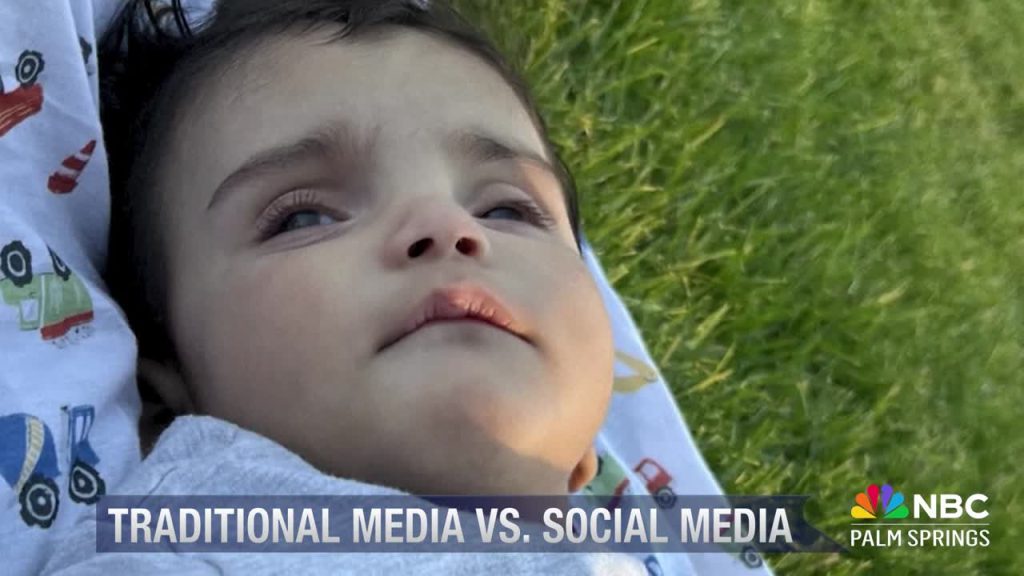Baby Emmanuel: A Case Study in the Collision of Traditional and Social Media
The story of Baby Emmanuel, a critically ill infant requiring a heart transplant, became a flashpoint in the debate surrounding medical misinformation, highlighting the divergent roles and responsibilities of traditional media and the often-unregulated landscape of social media. Initially reported by NBC Palm Springs, the case gained traction when Emmanuel’s parents, Alejandro and Maira Oceguera, publicly pleaded for a heart transplant for their son, who suffered from a rare heart defect. This initial coverage presented a heartbreaking story of a family grappling with a desperate situation, relying on the power of media to amplify their plea. However, as the story spread online, it quickly morphed into a breeding ground for misinformation and conjecture, demonstrating the power of social media to distort narratives and potentially obstruct access to accurate information.
The traditional media, represented by NBC Palm Springs and other reputable news outlets, approached the story with a focus on factual reporting. They presented the medical complexities of Emmanuel’s condition, the scarcity of infant heart donors, and the stringent evaluation process involved in transplant candidacy. Journalists sought information from medical professionals and the hospital, aiming to provide a balanced overview of the situation. While acknowledging the parents’ emotional pleas, they also aimed to contextualize those appeals within the broader framework of medical ethics and the allocation of scarce medical resources. This measured approach, characteristic of responsible journalism, stood in stark contrast to the narrative that began to unfold on social media.
Social media platforms, lacking the same editorial oversight and fact-checking procedures, became fertile ground for speculation and often unfounded accusations. The narrative rapidly shifted from a plea for a heart transplant to accusations of medical negligence and discrimination against Emmanuel. Some social media users claimed the hospital was denying the transplant due to the family’s immigration status or financial situation, allegations that were refuted by both the hospital and subsequent reporting by traditional media outlets. This illustrates a fundamental challenge in the digital age – the ease with which unverified information can spread, amplified by algorithms and echo chambers, often eclipsing accurate reporting. This created a chaotic information environment where discerning truth from fiction became incredibly challenging, potentially damaging the credibility of legitimate medical institutions and undermining public trust in the healthcare system.
The spread of misinformation surrounding Baby Emmanuel’s case had significant real-world consequences. The hospital faced a barrage of online harassment and negative reviews, fueled by the distorted narrative circulating online. Medical staff members were subjected to personal attacks, and the hospital’s resources were diverted to address the fallout from the online frenzy. This incident underscored the vulnerability of healthcare institutions to online reputational damage and the potential for misinformation to disrupt their operations. Furthermore, the misinformation campaign created unnecessary stress and confusion for the Oceguera family, who were already navigating an incredibly challenging situation. While social media initially amplified their call for help, the subsequent spread of false narratives likely added to their emotional burden.
This case also highlighted the complex ethical dilemmas inherent in reporting on sensitive medical cases, particularly those involving children. While the traditional media aimed to protect the family’s privacy and accurately portray the medical realities, the intense public interest fueled by social media created immense pressure. The ethical line between respecting patient confidentiality and fulfilling the public’s right to know becomes blurred in such situations. This raises questions about the media’s role in amplifying emotional appeals versus providing balanced, fact-based reporting that avoids sensationalism and safeguards the integrity of the healthcare system. Ultimately, the Baby Emmanuel case demonstrates the need for media literacy and critical thinking in the digital age.
The Baby Emmanuel case serves as a stark reminder of the dangers of misinformation in the digital age. While traditional media played a vital role in providing factual reporting and context, social media platforms amplified unverified claims, creating a confusing and damaging information environment. This case underscores the need for increased media literacy, stronger fact-checking mechanisms on social media, and a greater understanding of the ethical responsibilities of both traditional and social media outlets when reporting on sensitive medical issues. The incident highlighted the importance of distinguishing between genuine pleas for help and unsubstantiated allegations, as well as the need for responsible information consumption in an era where misinformation can quickly overwhelm accurate reporting. The implications of this case extend beyond Baby Emmanuel’s story, offering valuable lessons for navigating the complex interplay between medical information, media coverage, and the spread of misinformation online. It serves as a crucial case study for understanding the evolving challenges posed by the intersection of healthcare and social media.


